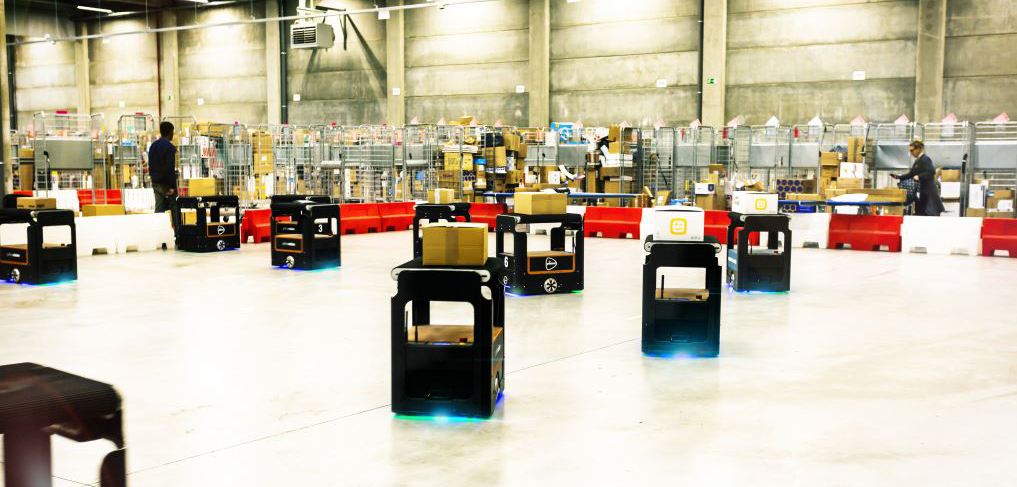The robotics department of Netherlands-based computer vision company Prime Vision has developed the concept of autonomous sorting, which entails sorting parcels using mobile robots. In general, sorting machines tend to be static and lack flexibility to easily adapt to changing circumstances. Autonomous sorting can help create a flexible and futureproof sorting center. Instead of fixed infrastructure, sorting centers of the future will make use of intelligent robots to sort parcels. Simply, all that is required is an empty production floor and a few days for the robots to ‘learn’ the layout to navigate.
In one of the manual sorting centers in Belgium, PostNL and Prime Vision have been testing autonomous sorting since the beginning of 2020. Björn van Batenburg, process innovator at PostNL, explains, “We started testing as we want to understand the ins and outs of autonomous sorting. Questions we ask ourselves include: What is the potential productivity? How do operators interact? How do we achieve optimal integration in existing processes? The flexibility, scalability and short implementation period are set to make the concept a valuable add-on to our logistics network.”
Bernd van Dijk, innovation Director at Prime Vision elaborates on the advantage of the trials from Prime Vision’s perspective: “For Prime Vision, performing these tests during actual operations constitutes the final stage in development toward full market introduction of autonomous sorting.”
Breakthrough due to Covid-19 restrictions
In a short period, business operations around the world have changed drastically as a result of Covid-19. While many organizations are negatively impacted by government restrictions that brought country’s economies to a near halt, postal organizations are currently experiencing peaks in the number of e-commerce parcels.
In Belgium, the volume of parcels increased enormously after restrictions were put in place in March. There, autonomous sorting has proved to be a very valuable asset due to its ability to operate with limited staff and within the safe distance restrictions to sort parcels.
Van Batenburg says, “In this coronavirus period, an important additional benefit is that the distance between operators is sufficient by default.”
He is pleased with the outcome of the test. “Thanks to autonomous sorting, the productivity per employee was raised and we have been able to handle the increased volume. The flexibility and scalability of the system is a great advantage, and in the coming weeks PostNL will be adding extra robots to improve parcel throughput even further.”
This sentiment is backed up by van Dijk: “We are very content with the results so far. We have always believed the adjustability and expandability of the concept are of high value. It’s great to see this reinforced on the ground and we look forward to further extending the concept in the coming period.”


